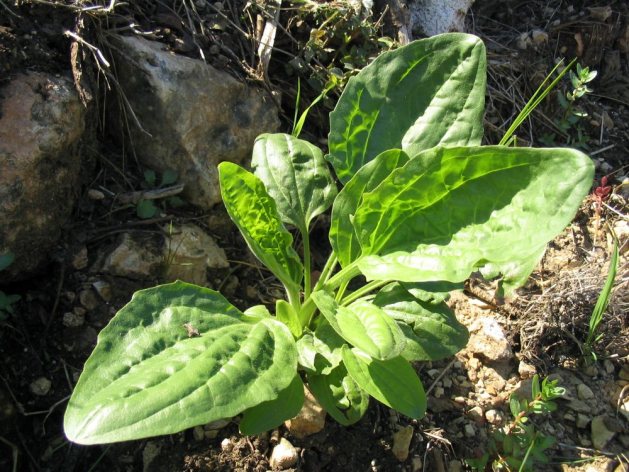Difference between revisions of "Translations:AY Honors/Edible Wild Plants/Plantain/1/es"
m (FuzzyBot moved page Translations:Adventist Youth Honors Answer Book/Edible Wild Plants/Plantain/1/es to Translations:AY Honors/Edible Wild Plants/Plantain/1/es without leaving a redirect: Part of translatable page "Adventist Youth Honors Answer Book/Edible Wild Plants/Plantain") |
Revision as of 15:32, 7 September 2021
Plantago major -Llantén
Descripción: El llantén de hoja ancha es un miembro de la familia de plantago, Plantaginaceae. En Norteamérica, esta planta es principalmente una mala hierba, a pesar de que es comestible y se utiliza en la medicina herbal. La planta es originaria de Europa y se cree que es una de las primeras plantas a naturalizarse en las colonias.
Esta planta se desarrolla mejor en suelos compactados. Se encuentra comúnmente en los límites del campo, ya que es tolerante a pesticidas y herbicidas. Se poliniza con el viento y es una de las causas de las alergias de verano cuando florece.
Dónde se encuentra: Mala hierba del césped común por todas partes del mundo.
Disponibilidad: Primavera temprana, verano, otoño.
Uso: Hojas machacadas se pueden aplicar directamente a la piel para detener un sangrado, picaduras de abeja y picaduras de insectos. Semillas de psyllium son un laxante. Las hojas son deliciosas ensaladas crudas. Durante el verano y otoño las hojas se pueden comer cuando se hierve como verduras.

